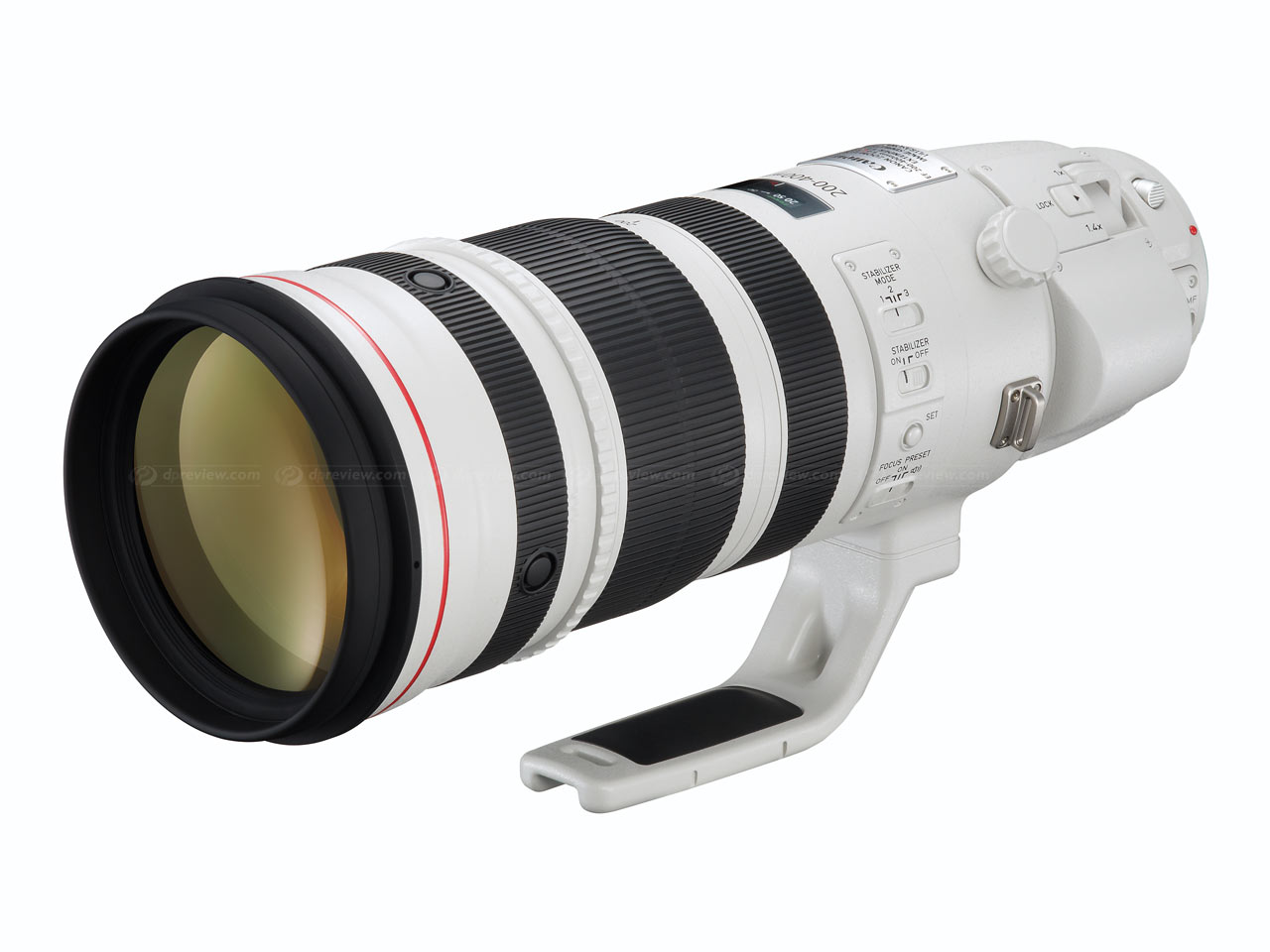
I don’t have to think about switching to Nikon any more?
For years now Nikon has had one lens that makes nature photographers who use any other brand salivate: the Nikkor 200-400 f/4 VR lens. Well, evidently Canon listened to all the complaints–or realized they could make a killing–and they have come up with their own 200-400 with an interesting trick up its sleeve: a built-in 1.4x teleconverter (I imagine that explains the “hump” on the side of the lens barrel).
No word on what size hole it will leave in your wallet, but it is supposedly shipping this year. Canon made a similar announcement last fall for the development of new 500mm and 600mm lenses, and today Canon has released weights for each (both reduced, the 600mm dramatically so compared to the original 60mm f/4L IS). However, it’s the 200-400 that really has my attention. I’ll try to get on the list at CPS to test one as soon as they start shipping.
To my mind, the biggest question is will this new lens accept teleconverters? Sure, it has a 1.4x built in, but can you put a 2x teleconverter on it so it becomes a 400-800mm f/8? Or stack another 1.4x with the internal teleconverter engaged to have a similar 392-784mm f/8 range? (I mention the latter option because it’s at least possible the image quality would be higher.)
Whither the DO?
At present, the longest lens I own is the 400mm f/4 DO IS. It’s light-weight, extremely compact, and with a little toning the images that it produces are stellar. The lens remains sharp with a 1.4x TC (560mm f/5.6) and with proper technique I’ve made good images with the 2x teleconverter (800mm f/8). Hell, I’ve even stacked teleconverters, although the quality declines noticably at that point. When I heard about the 200-400mm f/4, the first question that popped into my head was whether this would be the lens that replaces the 400mm DO. If it can accept teleconverts, I’d hedge my bet that the answer is “probably.”
But for those who simply want a walk-about zoom lens, there’s already a surprisingly good alternative to the 400mm DO, albeit a stop slower. Last fall, Artie Morris began posting about using the new 70-200mm f/2.8L IS Mk. II with the 2x teleconverter to make a 140-400mm f/5.6 zoom, and I tested the combination myself and was duly impressed.
For a lot of wildlife photography, the new 70-200mm with a 2x, combined with a standard telephoto (400mm, 500mm, 600mm, etc.) will pretty much “do it all.” Does that mean that a dedicated 200-400mm zoom is even necessary anymore–that Canon missed its window of opportunity? Alternatively, are the 400mm DO’s days are over? Only a side-by-side comparison of all three will do.
Canon Press Release
LAKE SUCCESS, N.Y., February 7, 2011 – Canon Inc. today announced the development of a new super-telephoto lens, the EF 200-400mm f/4L IS USM EXTENDER l.4x, for use with all EOS SLR cameras. A prototype of the new lens will be exhibited at the CP+ tradeshow, held in Pacifico Yokohama, from February 9 – 12, 2011.
The EF 200-400mm f/4L IS USM EXTENDER l.4x is being developed as an L-series super-telephoto lens with an integrated 1.4x extender and high-performance Image Stabilizer technology. The new lens will offer exceptional flexibility by incorporating a built-in 1.4x extender that increases the maximum focal length to 560mm for sports and wildlife photography. High-quality images with high levels of resolution and contrast will be possible through the use of advanced optical materials such as fluorite crystal. The new lens will also include dust- and water-resistant construction designed for extended usage under harsh conditions.
Canon will continue to respond to the needs of various users ranging from beginners and advanced amateurs to professional photographers, in an effort to enrich their photographic expression with SLR cameras by continuing to develop attractive new lenses with improved optical technology.
(press release from the Canon USA Web site)
